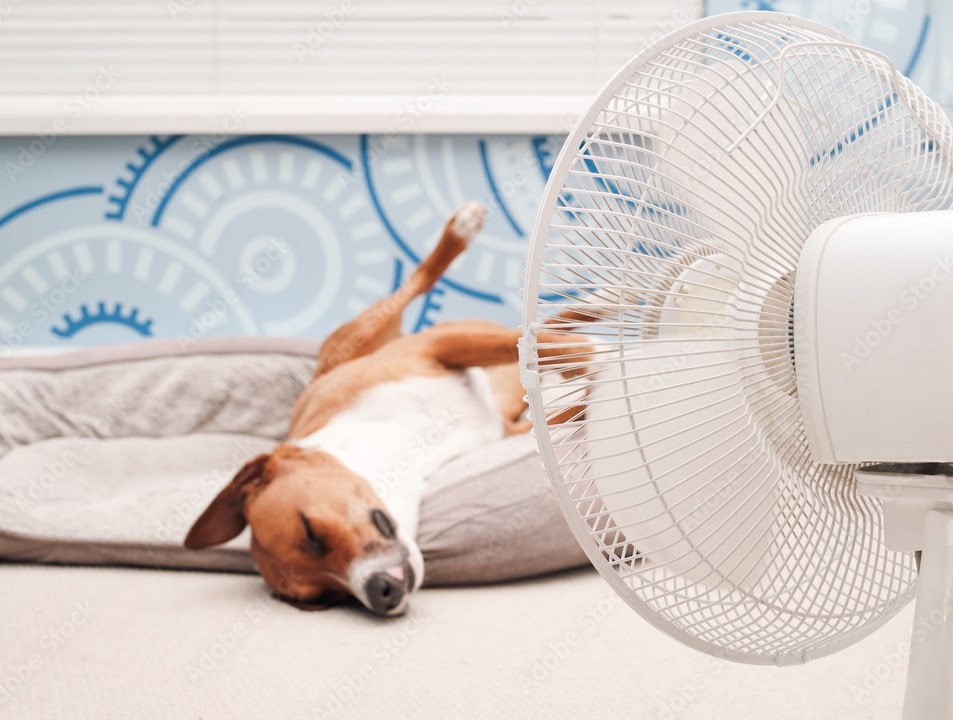What is Heat Stroke in Dogs?
Heat stroke occurs when a dog's body temperature rises to dangerous levels, typically above 104°F (40°C). This condition can lead to organ failure and, if not treated promptly, can be fatal. Certain breeds, especially those with short snouts like Bulldogs and Pugs, are at a higher risk due to their reduced ability to pant effectively.
Warning Signs of Heat Stroke in Dogs- Excessive Panting Panting is a dog's primary way of cooling down. However, if your dog is panting excessively or more heavily than usual, it could be a sign that they are overheating.
- Drooling Dogs may drool more than usual when they are hot. Watch for thick, sticky saliva as this can indicate dehydration, a precursor to heat stroke.
- Lethargy or Weakness If your dog seems unusually tired, weak, or is having difficulty walking, they may be suffering from heat exhaustion. This can quickly escalate to heat stroke.
- Vomiting or Diarrhea These are severe symptoms that can indicate your dog's body is in distress. Vomiting or diarrhea may also be accompanied by bloody stools.
- Bright Red or Pale Gums A dog's gums are a good indicator of their health. Bright red gums can indicate overheating, while pale gums might suggest shock.
- Rapid Heart Rate An elevated heart rate is a sign that your dog is struggling to cool down. You can check your dog's pulse by feeling the inside of their thigh.
- Confusion or Dizziness If your dog appears disoriented, stumbles, or has trouble standing, it’s a clear sign that they need immediate cooling and medical attention.
- Seizures or Collapse In severe cases, heat stroke can cause seizures, collapse, or even coma. If your dog shows any of these symptoms, seek emergency veterinary care immediately.
- Provide Plenty of Water Always ensure your dog has access to fresh, cool water, especially during hot weather. Carry water with you on walks and offer it to your dog frequently.
- Avoid Midday Walks The midday sun is the hottest, so try to walk your dog early in the morning or late in the evening when temperatures are cooler.
- Create a Cool Environment Provide shaded areas in your yard and allow your dog to stay indoors in air-conditioned rooms during extreme heat. You can also use fans or cooling mats to help keep your dog comfortable.
- Never Leave Your Dog in a Parked Car Temperatures inside a parked car can rise to dangerous levels within minutes, even with the windows cracked. Never leave your dog in a vehicle during warm weather.
- Use Cooling Products Cooling vests, bandanas, and mats are designed to help regulate your dog's body temperature. These can be especially useful during outdoor activities.
- Monitor Your Dog’s Activity Limit your dog’s exercise during hot weather. High-energy activities can quickly lead to overheating, so it’s best to keep playtime short and in the shade.
- Consider a Summer Haircut If your dog has a thick coat, consider trimming it to a shorter length for the summer months. However, be careful not to shave too close, as a dog's fur also provides protection from the sun.
If you suspect your dog is suffering from heat stroke, it’s crucial to act quickly:
- Move your dog to a cooler area immediately.
- Apply cool (not cold) water to their body, especially the belly, chest, and paws. You can use a hose, wet towels, or place them in a cool bath.
- Offer small amounts of water to drink. Don’t force them to drink too much at once, as this can lead to vomiting.
- Seek veterinary care immediately. Even if your dog seems to recover, heat stroke can cause internal damage, and professional evaluation is necessary.
Heat stroke in dogs is a serious condition that requires immediate attention. By recognizing the warning signs and taking preventative measures, you can help keep your dog safe and cool during the hot summer months. Remember, your dog relies on you to keep them healthy, so stay vigilant and protect them from the dangers of overheating.
For more tips on dog care and keeping your furry friend healthy, visit Patty’s Pet Foods blog for the latest advice and product recommendations!
